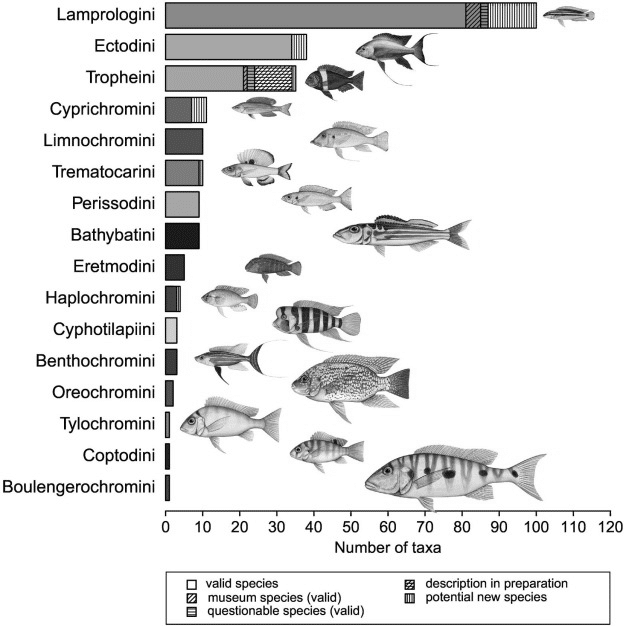A Full Lake Tanganyika Fish List and Species
Bathybagrus
Bathybagrus is one of the fish from Lake Tanganyika, a fish genus found in Africa.
Species
There are six specie categories of fish in this genus:
- Bathybagrus grandis
- Bathybagrus graueri
- Bathybagrus platycephslus
- Bathybagrus sianenna
- Bathybagrus stappersii
- Bathybagrus tetranema
Bathybates
It is a genus of piscivorous chichlids that originated in Lake Tanganyika in East Africa. This Lake Tanganyika fish is among the khlhlids that live deep in the water and occur frequently up to 200 meters (660 feet).
Its shape is long with silver color and black circles or black lines. These fish are 20.5 to 42 centimeters long which is equivalent to 8-16.5 inches. although not closely related, they are often compared to the piscivorous Rhamphochromis fish found in Lake Malawi.
Species
In this genus There are seven species.
- Bathybates fasciantus
- Bathybates ferox
- Bathybates graueri
- Bathybates horni
- Bathybates today
- Bathybates minor
- Bathybates vittaus
Ectodin
It is a tribe of Chilids fish in Lake Tanganyika in East Africa. These fish live in the lowest layer of water known as the benthic zone. Many genera in the tribe so that they are of the same species. these fish exhibit a morphological and behavioral mix, and this tribe includes a group of fish that live in sand, mud, and caves.
Genera
The following are the divisions of its genera:
• Aulonocranus
• Callochromis
• Cardiopharynx
• Cunningtonia
• Cyathopharynx
• Ectodus
• Grammatotry
• Lestradea
• Ophthalmotilapia
• Xenochromis
• Xenotilapia
Eretmodini
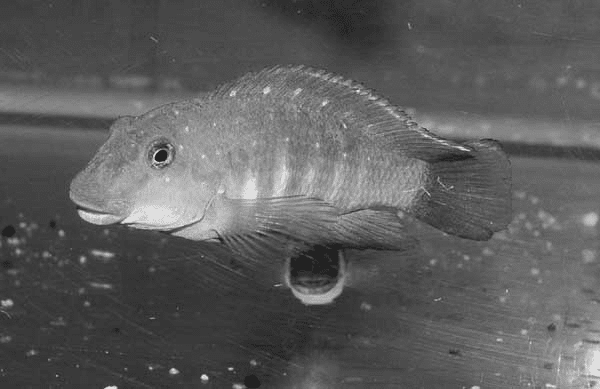
It is an African Cichlid Lake Tanganyika fish tribe. The group consists of five species of freshwater Tanganyika Lake fish of African origin. This Lake Tanganyika fish is small and have little storage space. They are found in the lowest depths of water with many waves. These fish hatch and do not lay their eggs through the mouth.
There are three genera;
• Eretmodus
• Spathodus
• Tanganicodus
Kapenta
Lake Tanganyika Sardine locally goes by the name Kapenta or matemba in Zambia, Malawi and Zimbabwe. (These fish are similar to the dagaa or ndaga is Rastrineobola argentea). The Kapenta has two species (fish from Lake Tanganyika, Limnothrissa Miodon, and Lake Tanganyika Sprat, Stolothrisa Tanaganicae). Kapenta form a group of pelagic Lake Tanganyika fish and Lake Malawi fish, they swim in large groups in open waters, preying on copepods and jellyfish potentially. The four spicies of lates, which are also native to Lake Tanganyika, are also similar to the Nile perch found in Lake Victoria are the main predators of Tanganyika sardine. These perennials are largely been affected by overfishing close to extinction over the past two decades.
Limnothrissa miododn is transplanted into natural and non-natural lakes in Africa. Large scale fisheries of Kapenta are currently found in a lake Kariba (near Zimbabwe, Zambia) and Cahora Bassa in Mozambique.
Limnothrissa miododn is often found to be 10 centimeters long and the tallest is 17 centimeters long. While, Stolothrissa tanganicae is a bit shorter at approximately 7 cm (maximum 10 cm) in length.
Lake Tanganyika Fishing of Kapenta
This type of Lake Tanganyika fish is usually caught at night using bait that is utilizing rigs equipped with LED lights or lamps that use kerosene to attract fish into the bait. A long net about six inches [6 cm] wide and eight to ten feet [8 to 10 m] long is used to pull fish from a depth of 130 feet [40 m].
Development
In recent years there has been a continuous shortage of Kapenta fish. In order to maintain this type of fish a number of countries have banned Kapenta fishing in shallow water that is approximately 20 meters deep, because Kapenta fish usually breed in shallow water, and hence introduction of licenses to prevent and control the fishing of Kapenta has been initiated to a large extent.
Food
The Kapenta fish is usually prepared by drying it in the sun on a place that is clean like concrete floors, stones or nets. Contingent on weather, the drying process takes one day or more. Unfortunately the season of this type of fish collides with the rainy season when the fish collects themselves in large schools, therefore drying using the sun becomes difficult and usually leads to losses as many fish are spoiled after being caught. These losses are not economical to merchants who put Lake Tanganyika fish for sale in various areas, since not properly dried fish is usually sold at lower prices. In the worst case scenario these dried fish get consumed as chicken feed. Pre-salting is one of the solutions, kapenta is usually salted at an approximate amount of 2.5 kilograms per 30 kilograms of fish, dried in the Zambezi river basin sun where there is high enough temperature. Kapenta is a main staple food due to the fact that they do not need to be refrigerated and they provide protein to African people. One cup of Kapenta fish feeds a whole family. Dried Kapenta fish are more popular than the bitter dried “dagaa” from Lake Victoria. But, low-income people still prefer to buy “dagaa” because it is cheaper.
In the country of Zimbabwe Kapenta fish are lightly fried with onions, tomatoes and peanut butter. They are consumed together with a traditional food called isitshwala or sadza.
Raw Kapenta is placed in plastic packaging and refrigerated. Frozen Kapenta fish are popular but are sold at a higher price than sun-dried Kapenta. Kapenta fish which have just been caught are not sold in the market, except in fishing villages.
In the 1960s and 1970s, many fish development projects have been experimenting with comparing the quality of salted and smoked fish with those that have not but these projects have not been able to bear fruits.
Kapenta fillets which contain ingredients such as vinegar and salt can be marinated and stored in the refrigerator. After two or three days the vinegar is removed from the fish using fresh water. The fish fillets are then served with a mixture of olive oil, garlic, vinegar, sugar, onion, pepper, much parsley, cerely, chilli peppers, and radish. The spicy fillets are ready to eat after two or three days in the refrigerator.
The Kapenta fish are an important bait to catch large tigerfish found in Africa (Alestidae family), although they were introduced in lake Kariba and Cahora bassa, there seems to have not been any environmental harm yet.
Types of fish caught in Lake Tanganyika such as Kapenta has a significant positive economic impact in parts where they are fished.
Limnochromis
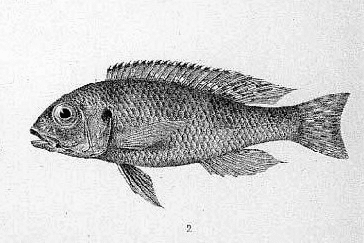
Limnochromis is a genus of cichlid fish which is small in size and is originated from Lake Tanganyika.
Specie categories of limnochromis
This genus at the moment is known to have three main species:
• Limnochromis
• Limnochromis
• limnochromis
Neolamprologus
Neolamprologus is a Lake Tanganyika fish from a cichlids genus whose origins are in East Africa but are grouped in only one species, Neolamprologus devosi which is mainly from the Malagarasi river that occurs in Lake Tanganyika. This is known to be the largest genus of cichlids in Lake Tanganyika and is also the largest genus in the Lamprologin tribe which includes Variabilichromis, Altolamprologus, Telmatochromis, Chalinochromis, Lepidiolamprologus, Julidochromis and Lamprologus. The second is a monotypic genus that is suspected to be distinct from Neolamprologus.
It is now known for a while that due to the analysis of mtDNA sequence, this genus is highly probable polyphyletic. These fish often change as their Variabilichromis divides. At least various of its older generations are now classified in the Neolamprologus group are also worthy of separation. That said, the fish have a structures that are similar and numerous species that have not been described, situation that leads to making analysis difficult. And just like many other Cichlids, at the moment its emerging species as well as the vast hybridization have caused numerous challenges to molecular studies to the extent which individual gene studies or those which utilizes nDNA or mtDNA are considered pretty much not worthy in terms of finding solutions around Lamprologini phylogeny.
Each generation of these Lake Tanganyika fish is different from the other in terms of its structure, habitat and ecology, genetic presence in one genera and species is usually enough because of severe low isolation of postzygotic. Neolamprologus males are always ready to lay and transplant eggs to other Lamprologin females they find open to spawn: The generations of mtDNA similar to other Lamprologin genes are found in abundance within the Neolamprologus species. Such hybrids not only have demonstrated to be fertile at least to some extent in various incidences, but also new specie frequently show up to be a result of such interbreeding.
Species
There are 46 species in this genus:
- Neolamprologus bifasciatus
- Neolamprologus boulengeri
- Neolamprologus brevis
- Neolamprologus brichardi
- Neolamprologus buescheri
- Neolamprologus cancellatus
- Neolamprologus caudopunctatus
- Neolamprologus chitamwebwai
- Neolamprologus christyi
- Neolamprologus crassus
- Neolamprologus cylindricus
- Neolamprologus devosi
- Neolamprologus falcicula
Neolamprologus fasciatus - Neolamprologus furcifer
- Neolamprologus gracilis
- Neolamprologus helianthus
- Neolamprologus leleupi
- Neolamprologus leloupi
- Neolamprologus longicaudatus
- Neolamprologus longior
- Neolamprologus marunguensis
- Neolamprologus modestus
- Neolamprologus mondabu
- Neolamprologus multifasciatus
- Neolamprologus mustax
- Neolamprologus niger
- Neolamprologus nigriventris
- Neolamprologus obscurus
- Neolamprologus olivaceous
- Neolamprologus pectoralis
- Neolamprologus petricola
- Neolamprologus pleuromaculatus
- Neolamprologus prochilus
- Neolamprologus pulcher
- Neolamprologus savoryi
- Neolamprologus schreyeni
- Neolamprologus sexfasciatus
- Neolamprologus similis
- Neolamprologus splendens
- Neolamprologus tetracanthus
- Neolamprologus timidus
- Neolamprologus toae
- Neolamprologus tretocephalus
- Neolamprologus variostigma
- Neolamprologus ventralis
- Neolamprologus walteri
- Neolamprologus wauthioni
Spathodus
Spathodus is a small cichlids genus that originated from the Tanganyika lake in East Africa.
Species
Within this genus there are two species which are:
- Spathodus erythrodon
- Spathodus marlieri
Acapoeta
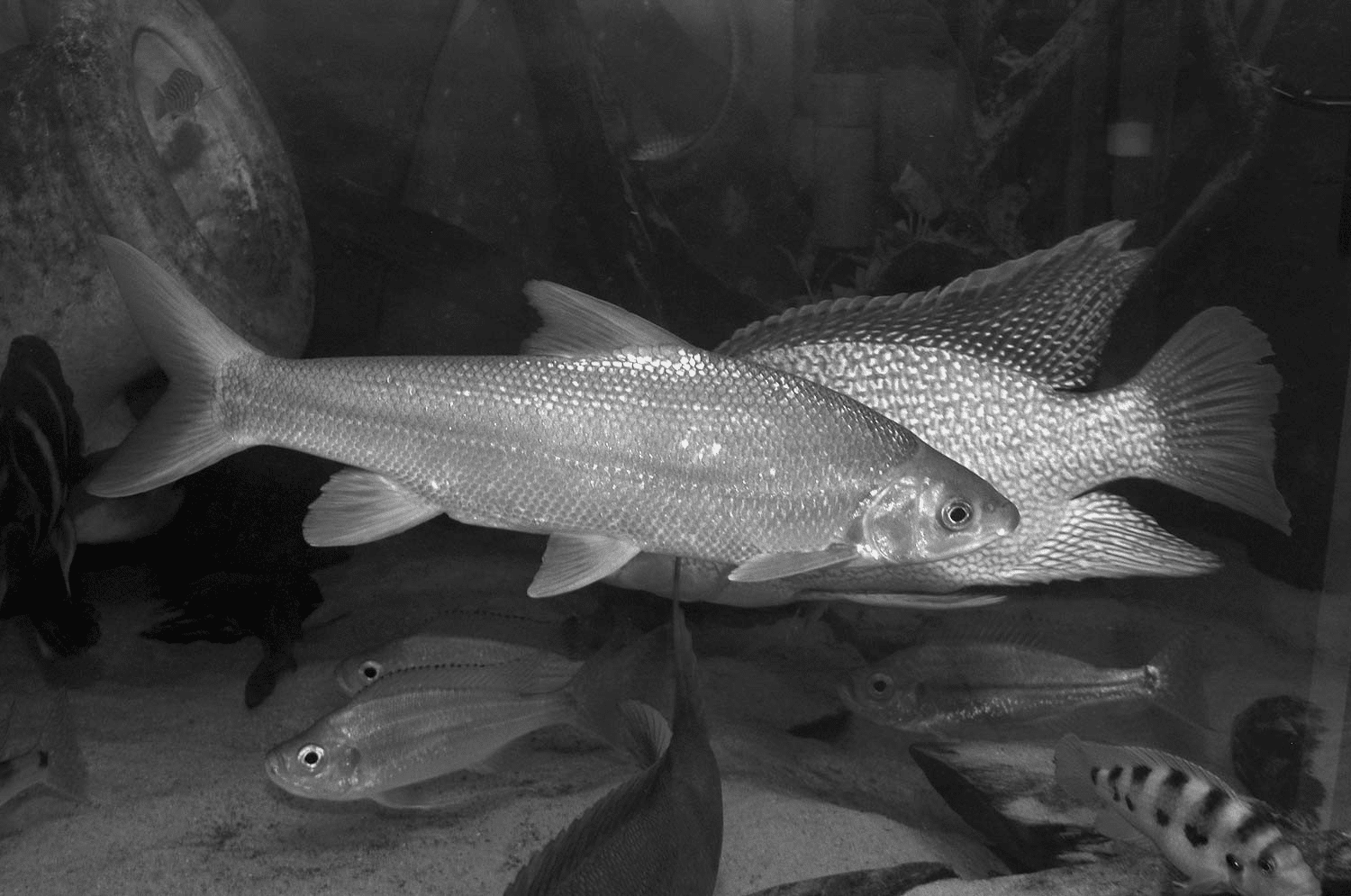
Acapoeta Tanganicae also known as the “Mbaraga”, is a ray-finned Lake Tanganyika fish species in the fish family Cyprinidae. Acapoeta genus monotypic and at the moment is classified as incertae sedis, because their presence in large groups of Cyprinidae is not certain.
Acapoeta Tanganicae is originated from Lake Tanganyika and the Rusizi River and is also found in Burundi, the Democratic Republic of Congo, Tanzania, and Zambia. In 2012 these fish were found in the areas of Lake Rukwa, an indication that in the past there was a connection between Lake Tanganyika and Lake Rukwa. It was assumed that the most obvious explanation of its existence was due to its abundance being low, situation that meant it was overlooked in the past as Lake Rukwa’s ichthyofauna member instead of a deliberate introduction.
Its usual environment is in rivers, freshwater lakes, part of the deltas that are inland over substrates of rocks. Their diet is aufwuchs as well as other foods that are collected from rocks or part of the base of lakes. These foods include insects, worms, diatoms and ostracods.
There has been a threat and severe damage to Acapoeta’s habitat caused by water loss triggered by deforestation, mudslides entering lakes tributary rivers‘ catchments. Excessive fishing is also a threat although these species still exist and may still found in large quantities and there is no findings to show any signs of its decline.
Acapoeta grows to a height of 60 centimeters (24 inches). These fish are distinguished from other similar African cyprinids basing on the presence of a horn in a shape of a rim on their lower mouth and have many scales that are in lateral line form, this fish featured with 62 -72 lateral line scales in comparison with Labeobarbus species that has between 21 – 44 lateral line scales.
African Bullhead
The African Bullhead (Lophiobagrus Cyclurus) is a claroteid catfish species originated from Lake Tanganyika along the border of Burundi, the Democratic Republic of the Congo, Tanzania, and Zambia. This particular species grows to a height of up to 8.0 cm c (3.1 in) TL.
This Lake Tanganyika fish species exhibits a behavior of nocturnal animals, hiding in rocks during the day. Its diet consists of chironomid larvae, beetle larvae, and crustaceans. The mucus present secretly in this species is confirmed to be toxic to other fish.
Aulonocranus
Aulonocranus Dewindti is cichlid fish species found in Lake Tanganyika and some of the rivers that flow into the lake.
Description
Aulonocranus Dewindti have bodies with expanded and compact shapes where the body length is three times its height. The ventral fins are featured with long filamentous, the first spine reaches the rear end fin in older males. The caudal fins have a shape of a crescent. The longest line of the body has approximately 33 – 36 scales. There is a sensory system of pores in the head area and there are two lateral lines. The lower pharyngeal bone is in a shape of a triangle and has very fine subconical teeth, the terminal is a bit sticking out into the lower jaw. The jaws’ teeth are very small and conical and aligned in 2-3 rows on every single jaw. The body is silver colored and the males longitudinal yellow stripes marks. The total length of the fish is 12 centimeters (4.7 in).
Distribution
Aulonocranus Dewindti origin environment is in the Lake Tanganyika basin and but also found in the Ruzizi and Lukuga rivers that flow into the same lake. They are found in the Democratic Republic of the Congo, Zambia, Burundi, and Tanzania.
Habitat and Biology
Aulonocranus Dewindti are known to be one of Lake Tanganyika fish that are mouthbrooders, the female sits on eggs and fry about 1.63 centimeters (0.64 in) in the mouth. They eat plankton that are present in the sand and can occur in large schools.
Categories and Names
Aulonocranus Dewindti is the only one known in its genus. Its name is a combination of Greek nouns αυλός (aulos) which means “pipe” and Κρανος (kranos) which means “helmet” which is referring to the large size sensory canals on the head of this species. The name also pays homage to the geologist called Jean Charles Louis De Windt (1876-1898), who unfortunately drowned in Lake Tanganyika when he was only 22 years of age.
Bathybagrus Stappersii
Bathybagrus Stappersii is a species of fish found in Lake Tanganyika along the border of Burundi, the Democratic Republic of the Congo, Tanzania, and Zambia. It matures up to a height of 45.0 cm (17.7 inches) SL and is an important part in small commercial fishing.
Bathybagrus Tetranema
Bathybagrus Tetranema is a species of catfish of type claroteid whose origin is in Lake Tanganyika where it is found in the waters bordering Zambia only. The fish grows to a height of 17.0 centimeters (6.7 inches) SL.
Bathybates Ferox
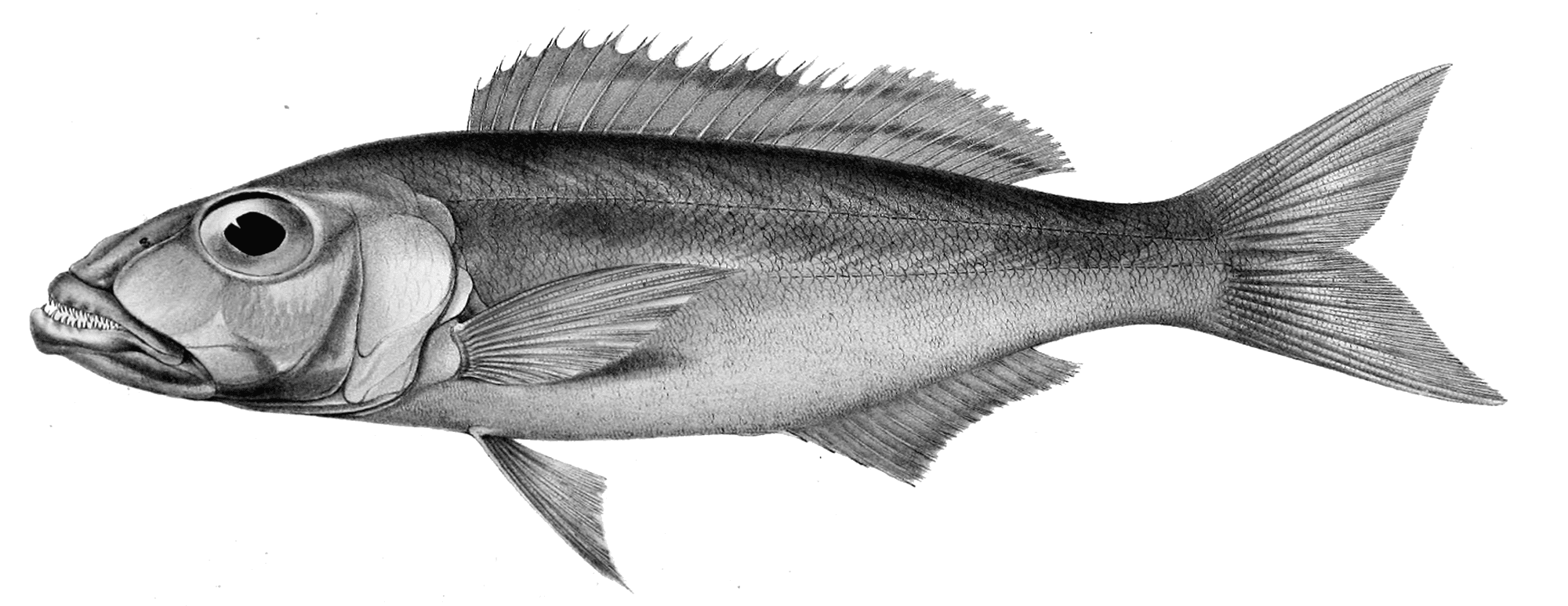
Bathybates Ferox is a type of Lake Tanganyika fish of the Cichlidae family. It’s origin is known to be Burundi, the Democratic Republic of the Congo, Tanzania, and Zambia. Its natural environment is Lake Tanganyika where it lives in shallow water and eats other fish. The IUCN has classified them as “species that have the world has no concern of in terms of conservation”.
Description
Bathybates Ferox has a body that is fairly deeper from back to belly that its width with blue markings. The mouth is large with sharp cone-shaped teeth. The height of this species can reach to a maximum of about 15 inches (38 cm).
Distribution
Bathybates Ferox is a Lake Tanganyika fish species, found in the Democratic Republic of Congo, Burundi, Tanzania and Zambia. It is sometimes found in the industry of aquarium where it is considered very violent and difficult to raise. It thrives well in very hard water with a pH of 8.6 and a temperature of 78 ° F (25.56 ° C).
Ecology
Bathybates Ferox is a fish that eats other fish, chases and eats small fish. Like other cichlids, Bathybates Ferox has a wide mouth and eggs with a diameter of 8.5 mm (0.33 in), it is among the largest species of Cichlidae.
Dignity
Bathybates Ferox is found only in Lake Tanganyika where it is described as widespread and in unlimited quantity. It is a benthic species whose habitat is shallow and dry waters, with a depth of less than 70 m (230 ft). No threats had been recorded to this fish specifically, but the major threats it faces are pollution that causes quality of water to drop, habitat destruction and over fishing. The International Union for Conservation of Nature has categorized the status of the conservation of this species into “minor concern”.
Featherfin Cichlid
Featherfin cichlid (Cyathopharynx furcifer) is a type of cichlid originating from Lake Tanganyika where it is found outside the rocky slopes. Plankton is its major food. This fish can grow up to a length of 21 cm (8.3 in) TL. He can also be found in the fish farming industry. It is currently the only species found in the genus by FishBase, but, reproduction and its morphology suggest that there are two living species. The second is often called C. foae in the aquarium business, but an assessment of the type specimen is needed to determine if this name is right.
Giant Cichlid
Giant cichlid (Boulengerochromis microlepis), which is also known by the name emperor cichlid, is a Lake Tanganyika fish species in the Cichlidae family, found in Lake Tanganyika in Tanzania. The fish is the only genus Boulengerochromis and the Boulengerochromini tribe member.
Appearance, habitat and behavior
The male reaches up to a height of90 cm (3.0 ft) while female grows up to a height of 75 cm (2.5 ft), potentially ranks it as the largest type of cichlid; probably the speckled peacock bass only (Cichla Temensis) of South America has the same size if larger at adult age.
The Giant cichlid is originated from Lake Tanganyika, which is found in portions along the borders of Burundi, the Democratic Republic of the Congo, Tanzania, and Zambia. Within these surroundings, it is a very popular species around the coastal areas at a depth of 100 meters (330 ft). The older ones are mainly eater of other fish while the younger ones eat the leaves; they also have different habitats depending on the age, the older ones live in small groups that are pelagic if they are not reproducing while the younger ones live in waters that are shallow, rock-strewn water because of the protection it provides. They are often sold as Lake Tanganyika aquarium fish, but their large sizes as adults makes unsuitable for most large private and or public aquariums.
Taxonomy and etymology
The species was first classified as Tilapia microlepis by George Albert Boulenger in 1899. It was later discovered that it not a tilapia, therefore the genus Boulengerochromis got adopted in 1904 by Jacques Pellegrin.
The original name of this species is the combination of morphemes, created from the lastname Boulenger, in honor of the birth of Belgian herpetologist and ichthyologist George Albert Boulenger (1858-1937), and the Greek word chromis used by Aristotle for for fish species. This was like the drum Sciaenidae and potentially formulated from the word chroemo which means “to neigh” referring to drums’ noise. The term was used by several percomorph fish, such as cichilds, damselfish, wrasses, cardinalfish, dottybacks, by ichthyologists since they were all believed to have some kind of close relations.
Convict Julie
Convict Julie (Julidochromis regani) is a type of cichlid species in the subfamily Pseudocrenilabrinae in Lake Tanganyika. It is therefore found in Zambia, Burundi, Tanzania, and the Democratic Republic of the Congo. The fish name was coined after Charles Tate Regan.
This species is associated closely with Julidochromis marlieri. Presumably, the ancestors of these two cross reproduced with some of the female ancestors of Telmatochromis over successive generations as they evolve.
Description
Julidochro misregani is one of the Lake Tanganyika fish that are small in size, only grows up to 13 cm (5.1 inch) TL and it is ray finned. It has a pale yellow body that is slender and long. A black stripe pattern that is varying, which depends the part of the lake the fish endemic to, is available. Although, Julidochro misregans all have 4 straight black strips spreading through the length of the whole body, although some variations have the fourth stripe specifically on the head. Meanwhile, the dorsal fin has vertical stripes. The edge of the outside of the dorsal, caudal, and anal fins is white, but on the other end they have yellow pectoral fins.
It is difficult to mate, but males have small genitals and females are generally plumper than males.
Ecology
The fish is able to eat both meat and plants. The fish is in most part monogamous, although there is some evidence of females taking more than one male mate, this has been reported from both the wild environment and in fish farms. They are secretive when in reproductive process, with tendencies of hiding into caves or on rocks for breeding and protection.
In the Aquarium
Julidochro misregani are dwarf cichlids that are small-growing and easy to transplant and care for if their basic needs are being met. Like the rest of Lake Tanganyika’s cichlids, Julidochro misregani thrives best in hard alkaline waters with a pH of 8.5 – 9.0 and a hardness of 12-14 kH, and in fish tanks not less than 60–80 liters (16–21 US gal). Only one Julidochromis species should be placed in a single fish tank, as they have the habit of hybridising easily. Hybridisation with Chalinochromis (possibly belonging to Julidochromis) and Telmatochromis is being assumed, and is much more common in Lamprologini to better prevent keeping more than one species of this genus in a single fish tank. The tank should rocks’ decorations to create caves and passageways as accommodation; since many cichlids of the East African rift valley tend to be relatively violent and territorial. Therefore, it is good to put them together with their fellow cichlids in order to prevent rowdy behavior.
Fry can live together with the parents and should be fed protein foods such as baby brine shrimp. Sometimes parents are seen leading the fry around the fish tank. Breeding occurs as normal within these intelligent and social fish, easily completed by taking a stock of young fish and letting them grow together until they form mating pairs.
Ctenochromis horei
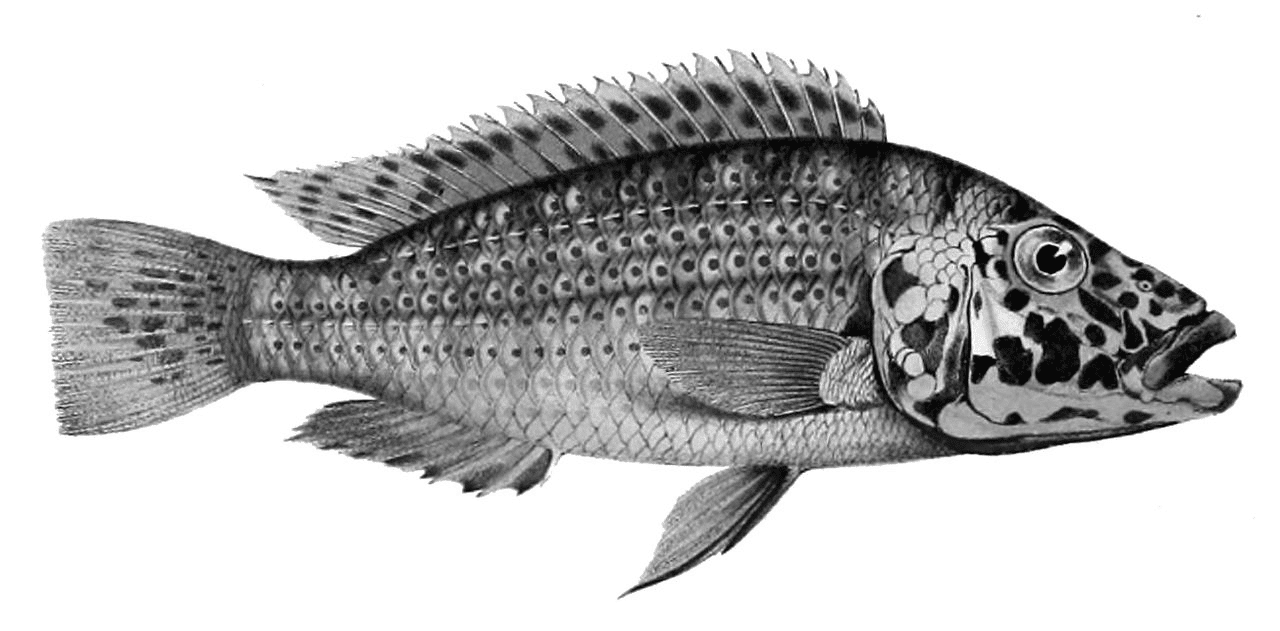
Ctenochromis horei is a type of haplochromine cichlid located in East Africa.
Description
They are one of large Lake Tanganyika fish in general, recorded to be more than 60 millimeters (2.4 in), have black markings on their heads. Males, while in search of food, show a yellow mark on their buttocks for females as a sign of courtship.
Males reach a height of up to 18–20 cm (7.1–7.9 in) and females 12–15 centimeters (4.7–5.9 in).
Distribution
Ctenochro mishorei is found in the depths of Lake Tanganyika along the borders of Tanzania, the Democratic Republic of the Congo, Burundi, and Zambia. It is found in Lake Tanganyika itself and its branching rivers including but not limited to the Ruzizi River and the Nua River, as well as the Lukuga River that flows all the way down to the Kisimba-Kilia falls.
Habitat and Ecology
Ctenochromis horei are ubiquitous in the depths of Lake Tanganyika where they thrives in rocky and sandy slopes but tend to prefer environment that has soft surface bases, where aquatic leaves grow. This is the most common species in shallow waters along the shores of the lake and lower streams of branched rivers. They eat both plants and meat, but adults eat fish mainly. The females of this species are mouthbrooders, uses their mouths to both brood eggs and fry. The dominant males are known for protecting female fish who are ready to reproduce from other males in the area. The dominant males have a harem of females but other males will sometimes sneak to mate with those females whenever they get a chance.
Threats
Ctenochromis Horei are in danger from the rising water cloudiness and pollution in shallows triggered by agriculture and forestry activities in the Lake Tanganyika drainage basin, are also threatened by the usage of seine nets which leads to over fishing.
Name
The unique name pays homage to the British explorer and missionary, Captain Edward Coode Hore (1848-1912], who was specialized in collecting this species.
Dinotopterus Cunningtoni
Dinotopterus Cunningtoni is a catfish species beloing to the Clariidae family. They are found in Lake Tanganyika, along the borders of Zambia, the Democratic Republic of the Congo, Burundi, and Tanzania. They are important in small-scale commercial fishing. In terms of size, they are able to grow up to a height of 1.75 meters (5.7 ft) in average height.
The Dinotopterus family is currently traced to be monotypic, but initially included species in Lake Malawi that are now classified as Bathyclarias.
Ectodus
Ectodus descampsii is a type of cichlid fish species found in Lake Tanganyika in East Africa where it prefers areas with large sand residues. It eats small organisms, photosynthetic eukaryotic organisms and diatoms. This species grows all the way up to a height of 10.4 centimeters (4.1 in) TL. It is also found in the fish farming business. At the moment it is the only known species in its genus. The unique name of this fish honors Captain Georges Descamps (1855-1938), the Belgian officer who played a huge role in the abolition of the slave trade in Tanganyika.
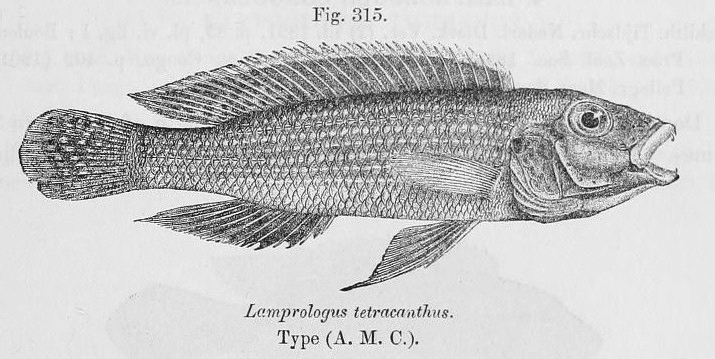
Fourspine Cichlid
Fourspine cichlid (Neolamprologus tetracanthus) is a type of cichlid that originates from in Lake Tanganyika where it lives in sandy areas. In addition to eating insects larvae and other types of fish, this species has special expertise of sucking molluscs using their shells. This Lake Tanganyika fish can grow up to a height of 20 cm (7.9 in) TL. Also, this species is being used in the fish farming business.
Gnathochromis Pfefferi
Gnathochromis pfefferi is a fish species from Africa belong to the Cichlidae family. It is found in Lake Tanganyika and its small tributaries along the borders of Tanzania, the Democratic Republic of the Congo, Burundi and Zambia. They are popular and scattered widely. This type of cichlid is found in waters that are shallow, often in soft bases in areas with aquatic grasses.
They can reach a height of 14 cm (5.5 in), and females are slightly shorter than males. It feeds on invertebrates (particularly shrimp) and materials from plants. Like most cichlids in Lake Tanganyika, they are mouthbrooders, and sometimes kept in fish tanks.
Although it currently included as part of the Gnathochromis genus, it’s relation is very far from the genus G. permaxillaris (tribe Limnochromini), but very close to Tropheini. The unique name of this fish pays homage to the German archaeologist Georg Johann Pfeffer (1854-1931).
Golden Julie
Golden julie (Julidochromis ornatus) is a type of cichlid species originating from Lake Tanganyika, found mainly on the northern and southern shores of the lake around the rocks. This species type can grow up to a length of 8.5 centimeters (3.3 in) TL.
Grammatotria
Grammatotria lemairii is a type of cichlid species originating from the Lake Tanganyika in East Africa where it prefers sandy areas. This species reaches up to a height of 26 cm (10 in) TL. It is currently the only known species in its taxonomic rank. Occasionally this species is kept in aquarium. The special name of this Lake Tanganyika fish is after Lieutenant Charles Lemaire (1863-1925) who led the caravan of the Congolese Free State Expedition, which gathered samples of fish species from Lake Tanganyika, including the G. lemairii.
Greenwoodochromis Bellcrossi
Greenwoodochromis bellcrossi is a species of fish in the genus Cichlidae. They are originated from the depths of Lake Tanganyika, East Africa. The special name of this fish pays respect to its founder the South African zoologist Graham Bell-Cross (1927-1998) who had the title of deputy director at the National Museums and Rhodesia Monuments.
Greenwoodochromis Christyi
Greenwoodochromis christyi is a species of fish in the Cichlidae family. It is found deep in the southern part of Lake Tanganyika. The special name of this fish was created after the explorer and native Cuthbert Christy (1863-1932).
Interochromis Loocki
Interochromis loocki is a type of cichlid species present in Lake Tanganyika in East Africa. They are very widespread but few species live on rocky reefs with 2–3 meters (7–10 ft) of water. The species can grow up to a height of 10.5 centimeters (4.1 in) TL. It is currently the only known species in its genus.
Julidochromis Dickfeldi
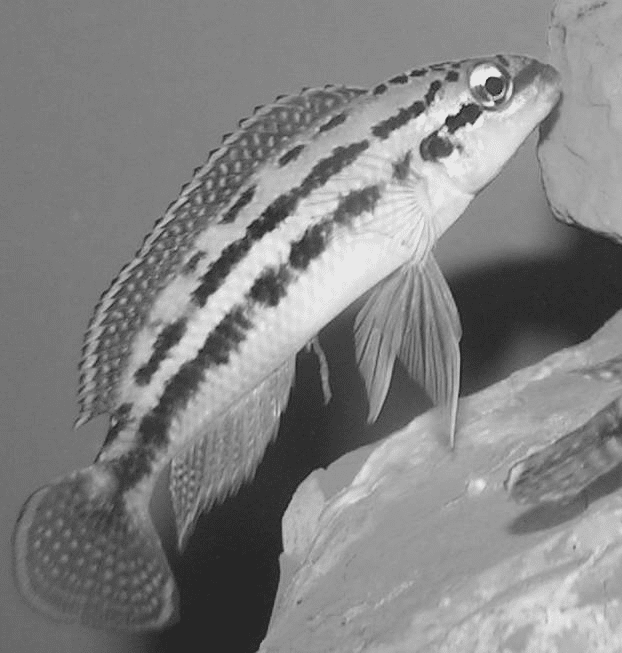
Julidochromis dickfeldi is a cichlid specie type found in Lake Tanganyika Africa, whereby it is only known to be from the southwest region. This species lives in rocky areas / rubble debris, each fish having its own empire in a crack or hole. This species reaches up to a length of 11 cm (4.3 in) TL. The special name of this fish is a tribute to the German keeper of fish, Alf Dickfeld who proposed an exploration from which the species was found.
Julidochromis Marlieri
Julidochromis marlieri is a type of cichlid located in the Lake Tanganyika, only in the southwest region, preferring rocky beaches in the waters that are deep. In the fish farming business, they are best known as Spotted Julie, Marlier’s Julie or Chequered Julie. This fish type grows up to a height of 15 cm (5.9 in) TL. Females are usually bigger than males in adulthood. The specific name of this fish is after the Belgian veterinarian Georges Marlier who collected this species.
Kibonde
The balm also known as salmontail fishcat, Chrysichthys brachynema, is a catfish from Lake Tanganyika of the Claroteidae family, often grown in fish tanks. This fish can be classified as Amarginops brachynema.
This Lake Tanganyika fish has a capability to grow up to a height of 77 cm (30 in). They live on the inshores of the lake and often feed on crabs.
In the Lake Tanganyika Fish Tank
The fish is very strong but peaceful. As it grows bigger in size, it eats small fish. Eats small crabs, sinking pellets and small frogs.
Use fine gravel. Do not use gravel that have sharp corners. Hidden places are not needed as this fish spends its days swimming above and under the glass until the time to eat arrives. Care is needed dealing with the fish using hands as the pectoral spines and sharp dorsal are surrounded by mucus that will irritate the skin. They can live in any kind of water, brackish water to fresh water. The water temperature should be between 21–30 ° C (70–86 ° F). The fish can tolerate a pH of 6.5-7.8.
Tanganyika Killifish
Tanganyika killifish (Lamprichthys tanganicanus) is a poeciliid species found in Lake Tanganyika, whereby it leaves in large schools, especially near the shores of the cliffs but also off the coast. This species grows to a height of 15 cm (5.9 in) SL. It lays eggs with outside fertilization and stores its eggs in narrow openings. They are commercially harvested for food, as well as for fishfarms or aquariums. It has been also established in Lake Kivu.
Kukumai
Kukumai (Bathybagrusgrandis) is a species of claroteid catfish natives of Lake Tanganyika near the borders of Zambia, Tanzania, the Democratic Republic of the Congo and Burundi. It reaches a maximum height of 63 centimeters (24.8 inches) TL when fully grown and is the least harvested species for commercial purposes.
Labeo Kibimbi
Labeokibimbi is a fish of genus type Labeo from the Lualaba river and Lake Tanganyika located in the Democratic Republic of Congo side.
Labeobarbus Platyrhinus
Labeobarbus platyrhinus is a ray finned fish species, part of the Labeobarbus family found originating from the Lake Tanganyika and its drainage basin.
Labeobarbus Tropidolepis
Labeobarbustropidolepis is a ray finned species belonging to the Cyprinidae genus. They are found in Burundi and Tanzania basin of Lake Tanganyika. Its natural environment are rivers, freshwater marshes, inland deltas, and freshwater lakes. It has not been considered a species that is under threat of extinction by the IUCN.
Sardine of Lake Tanganyika
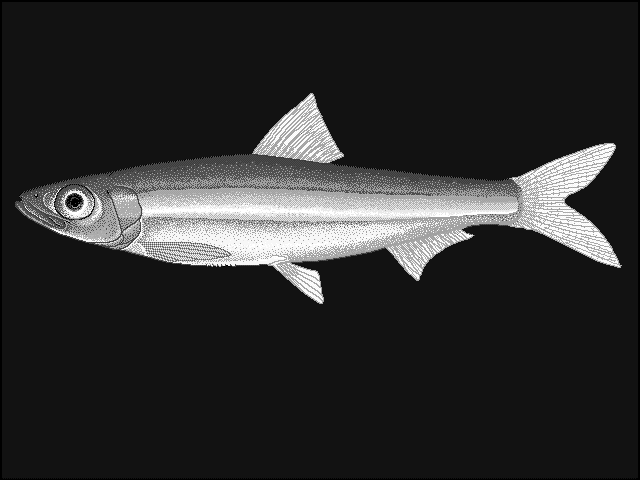
Lake Tanganyika sardine (Limnothrissa miodon) is a freshwater species within the Clupeidae family that grows in Lake Tanganyika but is now found in other lakes in Africa as a source of food. They are monotypic within the Limnothrissa taxonomic rank. Both the Lake Tanganyika sprat and the sardine are collectively known as Kapenta.
Lamprologus Signatus
Lamprologus signatus is a type of cichlid Lake Tanganyika fish that loves deep water instead of muddy one. This species likes to live on shells. It can reach up to 5.5 centimeters (2.2 in) TL. The fish can also be found in the fish farming business.
Lepidiolamprologus Boulengeri
Lepidiolamprologus boulengeri is a type of cichlid species originating from Lake Tanganyika along the Tanzanian coast to the north of the lake. The species pairs live together in their habitat and females live in snail shells in a hole dug in the sand. This species can grow up to a height of 6.2 centimeters (2.4 in) TL. It can also be found in the fish farming business. Its specific name of this fish is coined after the British-born Belgian zoologist, George Albert Boulenger (1858-1937).
Lophiobagrus Aquilus
Lophiobagrus aquilus is a claroteid catfish species originating from Lake Tanganyika on the borders with Tanzania, the Democratic Republic of Congo, Burundi, and Zambia. This species grows up to 8.0 centimeters (3.1 inches) TL.
This Lake Tanganyika fish species thrives at night, hiding in rocks during the day. Eggs and babies are hidden by the males in their mouths.
Lophiobagrus Brevispinis
Lophiobagrus brevispinis is a species of catfish of type claroteid found in Lake Tanganyika along the borders of Burundi, Tanzania, Zambia, and the Democratic Republic of Congo. This species can reach up to a maximum height of 5.1 centimeters (2.0 inches) TL.
Micralestes Vittatus
Micralestesvittatus is a Lake Tanganyika fish species of the genus Alestidae. They are found in Tanzania. Its natural environment is known to be rivers.
Minnow of Lake Rukwa
Minnow of Lake Rukwa (Raiamas moorii) is a species of ray finned fish in the Cyprinidae family. It originates from Lake Kivu, Lake Tanganyika, and Lake Rukwa along the borders of Tanzania, Zambia, and Democratic Republic of Congo Rwanda. Its natural environment is known to be freshwater marshes, rivers, freshwater lakes and deltas that are inland.
Neolamprologus Mondabu
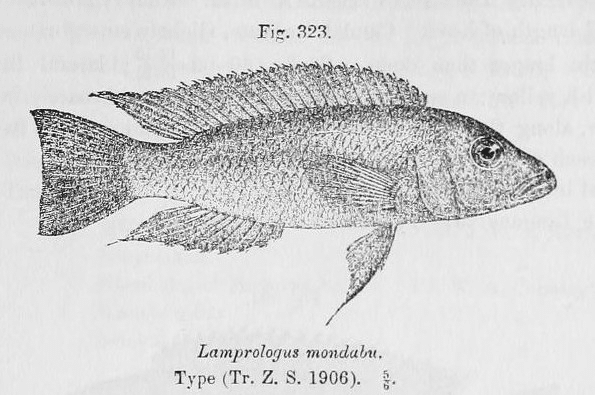
Neolamprologus mondabu is a cichlid type of specie present in Lake Tanganyika except in the southern side where it has been taken over by the type N. modestus. Prefers rocky eroded areas, going to sandy areas to breed. Eats Lamprichthys tanganicanus eggs. This species reaches up to a maximum height of 10.7 centimeters (4.2 in) TL. It is also utilized in the fish farming business and aquariums.
Female Neolamprologus mondabu have capability to dig holes in the ground to support feeding of their babies. This feeding is uncommon and unfamiliar with other subtrate-brooding cichlids of Africa, but resemblence has been identified with cichlids from Central America.
Neolamprologus Niger
Neolamprologus niger is a cichlid species type found in Lake Tanganyika in the northern beaches. They live in caves and eat molluscs. This species fully grows to a maximum height of 9 cm (3.5 in) TL. It is also used in the aquarium industry.
Neolamprologus Petricola
Neolamprologus tretocephalus is a type of cichlid species that is endemic to Lake Tanganyika, whereby it is only known to be located the lake’s coast along the borders of the Democratic Republic of Congo. This is one of Lake Tanganyika fish species list can grow to a full height of 15 cm (5.9 in) TL. It is also part of the aquarium business.
Neolamprologus Tretocephalus
Neolamprologus tretocephalus is a cichlid species which is endemic to Lake Tanganyika. It prefers sandy areas in the northern half of the lake. It feeds on molluscs. When fully grown, it reaches a maximum height of 15 cm (5.9 in) TL. It is also part of the aquarium business.
Paracyprichromis Nigripinnis
Paracyprichromis nigripinnis is a type of cichlid species found in Lake Tanganyika, known to be existing at the northern end of the lake. This fish has a maximum height of 11 cm (4.3 in) TL when fully grown. This species, can also be found in the fish farming and aquarium business.
Phyllonemus Filinemus
Phyllonemus filinemus is a species of claroteid Lake Tanganyika fish found on the borders of the Burundi, Democratic Republic of Congo, Tanzania, and Zambia. It can grow up to a height of 8.7 m (3.4 inches) TL.
Pseudosimochromis Marginatus
Pseudosimochromis marginatus is a fish of cichlid specie type originating from Lake Tanganyika, East Africa. This fish prefers shallow water with rocky debris. They fully grow as adults at a maximum height of 10 cm (3.9 in) TL. This species is also found in the aquaculture business.
Sprat of Lake Tanganyika
Lake Tanganyika Sprat (Stolothrissa tanganicae) is a fish species in the Clupeida family. It contains only one immediate surbodinate taxon in the Stolothrissa genus. They known to exist in Zambia, the Democratic Republic of the Congo, Burundi, and Tanzania. Freshwater lakes are its natural environment. This species and the sardine of Lake Tanganyika are collectively known as Kapenta.
Synodontis Dhonti
Synodontis Dhonti is an upside-down catfish species originating from the Democratic Republic of Congo, known only to exist in Lake Tanganyika. This Lake Tanganyika fish was first described by the Belgian-British zoologist George Albert Boulenger in 1917, after his exploration of fish samples collected in Lake Tanganyika at Kilewa Bay which is part of the Democratic Republic of Congo. The fish name was coined after M.G. Dhont-De Bie, who escorted the collector, Dr. L. Stappers, on his exploration. At some phase of his exploration, he showed that Synodontis irsacae was supposed to be a younger version of S. dont and therefore the two got classified as same species, but follow up research has shown the differences between the two species and they are now considered as two different species.
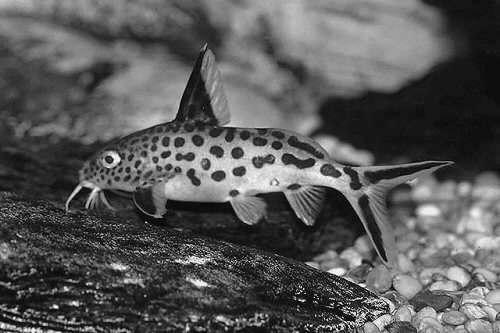
Synodontis Grandiops
Synodontis Grandiops is a catfish that is upside-down whose origin is the Burundi,, Democratic Republic of Congo, and Tanzania, specifically in Lake Tanganyika. The fish was first documented by Jeremy John Wright and Lawrence M. Page in 2006, from specimens collected at different points of Lake Tanganyika’s shores. This species has a Latin name from the Latin word “grandi”, which means “big or large”, and the Greek “ops”, which means “eye”, description that refers to the fish’ large eyes.
Synodontis Ilebrevis
Synodontis ilebrevis is a species of upside-down catfish located in Zambia’s side of Lake Tanganyika. Originally recorded by Jeremy John Wright and Lawrence M. Page in 2006, from samples gathered from Lake Tanganyika at Cape Chaitika, Zambia. The name of the species comes from the Latin word “ile”, meaning gut, and the Latin word “bevis”, that means short, the two words together are referring to the relatively intestine of this Lake Tanganyika fish species.
Synodontis Irsacae
Synodontis irsacae is an upside-down catfish species found in Zambia, Tanzania, and the Democratic Republic of the Congo, present only in Lake Tanganyika. Originally described by Belgian fish expert Hubert Matthes in 1959, from the specimens that were gathered from Lake Tanganyika in Kalundu, part of what is now the Democratic Republic of Congo. The name “irsacae” is derived from the abbreviation “I.R.S.A.C.”, or Institut pour la Recherche Scientifique en Afrique Centrale. For many years, species specimens were treated as young members of the S. dhonti species, but in 2006, J.J. Wright and L.M. showed different characteristics of this Lake Tanganyika fish species which developed into their categorization as different species.
Synodontis Multipunctatus
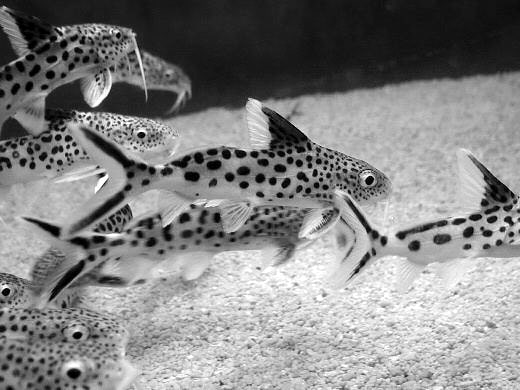
Synodontis Multipunctatus, also callled using other names such as cuckoo squeaker, cuckoo catfish, or multipunk, is a Lake Tanganyika small sized catfish. This Lake Tanganyika fish is known to be a brood parasite basing on its tendencies of mouthbrooding cichlids. As a matured adult, this species fully grows to a maximum of 27.5 cm (10.8 in) TL. This species plays a minor role in commercial fishing.
Tanganikallabes Mortiauxi
Tanganikallabes mortiauxi is an airbreathing catfish species located in the Democratic Republic of the Congo, Burundi, Zambia and Tanzania. It is a Lake Tanganyika fish species with a maximum height of about 33.0 cm (13.0 in) TL. It is found in rocks on the shores of lakes.
Telmatochromis Temporalis
Telmatochromis temporalis is a type of cichlid species located in Lake Tanganyika where it lives in rocky areas of approximately 5 to 10 meters (16 to 33 ft) although it sometimes reaches down to 20 meters (66 ft). This species’ growth can reach a height of 10.2 cm (4.0 in) TL. This Lake Tanganyika fish is also utilized in the aquaculture business.
Telmatochromis Vittatus
Telmatochromisvittatus is a cichlid Lake Tanganyika fish species that is usually found swimming around the depth of 10 meters (16 to 33 ft) but it sometimes has a presence way down to 20 meters (66 ft). This species can have a height that reaches approximately 8.6 meters (3.4 in) TL. Additionally, the species is also found in the aquaculture business.
Trematocara Zebra
Trematocara zebra is a cichlid specie type that is present in Lake Tanganyika. The fish is known to thrive in rocky shores of the northwest of the lake. They are preferred environment is the sublittoral zone, whereby they can grow up to a height of 6.9 cm (2.7 in) SL when fully matured.
Trematochromis Benthicola
Trematochromis benthicola is a species of ray finned fish in the genus Cichlidae, the Haplochromini genus and the subfamily Pseudocrenilabrinae. It is found throughout Lake Tanganyika along the shores of Congo, Tanzanian, Burundi and Zambian. Their preferred habitat is caves hidden in shallow waters.
This Lake Tanganyika fish species was first documented back in year 1962. During its discovery it was classified as the Haplochromis – later grouped as the “wastebin genus” for Haplochromini cichlids – and in the end got categorized into the Ctenochromis genus, but has significant differences with fishes within this species. As a result, it was proposed to be removed from the monotypic genus Trematochromis species, created in 1987 during the time when the “C.” type benthicola was misinterpreted for the second time.
Tropheus Annectens
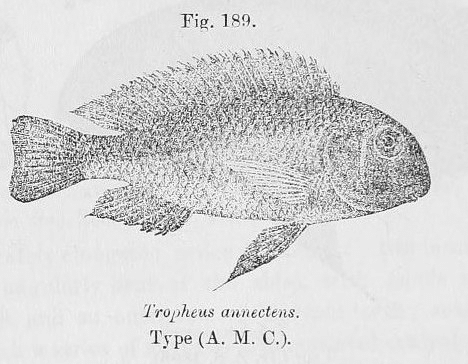
Tropheus annectens is a cichlid fish specie that is endemic in Lake Tanganyika, thriving in large rocky areas. This species can easily grow up to a height of 8 cm (3.1 in) when fully matured. The aquarium trade also utilized this fish.
Xenotilapia Bathyphila
Xenotilapiabathyphila is a type of cichlid fish species from Lake Tanganyika. The species usually swims in schools, in sandy areas. It eats copepods and small sized shrimps. This fish can grow up to a height of 10.3 cm (4.1 in) TL. Additionally, the fish is utilized in the aquarium industry.
Xenotilapia Papilio
Xenotilapia papilio is a species of cichlid that is originally from Lake Tanganyika in East Africa. This fish is found on the west beaches of the lake, between Tembwe (Deux) and Kanoni in the Democratic Republic of Congo. This particular Lake Tanganyika fish species thrives in deeper, environment that is rocky, especially in areas where the rocks are surrounded by sand, around a depth of about 3–40 meters (9.8–131.2 ft).
Xenotilapia Spiloptera
Xenotilapias piloptera is a type of species known as cichlid that is endemic in Lake Tanganyika, whereby it prefers sandy areas. This species can grow up to a height of 9.6 centimeters (3.8 in) TL. The fish is also part of the aquaculture business.
Xenotilapia Tenuidentata
Xenotilapiatenuidentata is a cichlid species originating from in Lake Tanganyika and known to have a large presence in the western beaches (Democratic Republic of Congo). This species when fully matured can reach a height of 8 cm (3.1 in) TL. It is also a part of the aquaculture business. Some authorities have categorized the species as part of the family of Microdontochromis in parallel with Xenotilapia rotundiventralis, and X. tenuidentata as the type species.
For more articles related to lakes in Tanzania and their inhabitants click here!
Estimated reading time: 35 minutes

























